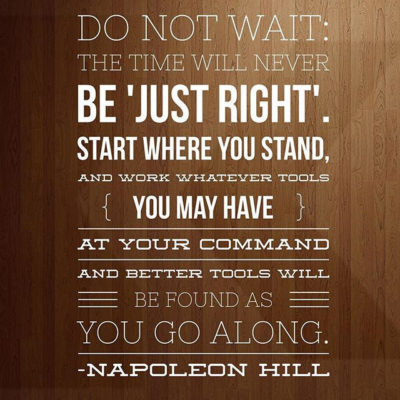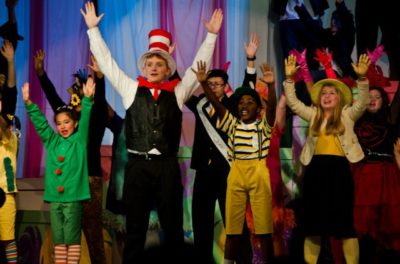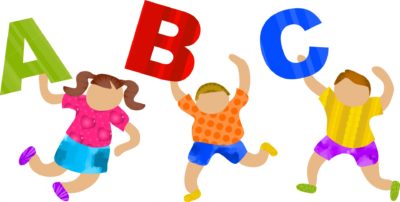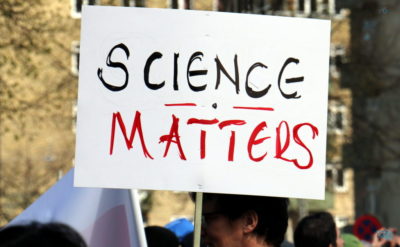 Which is truth?
Which is truth?
“Those that know, do. Those that understand, teach.”-Aristotle
“Keep up that fight, bring it to your schools. You don’t have to be indoctrinated by these loser teachers that are trying to sell you on socialism from birth.” –Donald Trump Jr.
Both statements make me think of my students. I think of the hundreds of times I have been asked what I think about a topic. I think of the hundreds of time I have smiled in response and said, “I am far more interested in you finding out what you believe and why you believe it…”
You see, I firmly believe educators should remain neutral in the classroom when it comes to controversial or political debates; an absolute beige-on-tan kind of neutral.
That type of neutral takes immense self-control and an intense belief in the importance of the role I play in my students’ lives. I truly do believe students can and do look up to teachers. A good teacher influences their students’ lives far beyond the standardized test scores they earn at the end of the year. My beliefs could easily become my students’ beliefs. That is not a dynamic of educating young minds that I take lightly.
So, why do I do it? Why do I withhold my deepest beliefs from my students if they may take them on and, in my opinion, make this world a better place? Continue reading
 Trauma is a beast with multiple personalities. It can slink in the classroom, with downcast eyes and arms crossed; hoping to be unseen. It can also fling itself through the door, announcing its energy in bubbly, overly helpful behaviors that cross the border frequently into bossy and inflexible, resulting in a lonely child bewildered by her lack of friends. Trauma can be tired, unfocused, quick to be red-faced angry, fidgety and/or slack-bodied. All within a single day! Trauma is exhausting and confusing, not only for children, but for teachers too. That is why I am thrilled that our state is taking a proactive approach to helping BOTH teachers and students to address many of the behaviors that students of trauma present with in our classrooms.
Trauma is a beast with multiple personalities. It can slink in the classroom, with downcast eyes and arms crossed; hoping to be unseen. It can also fling itself through the door, announcing its energy in bubbly, overly helpful behaviors that cross the border frequently into bossy and inflexible, resulting in a lonely child bewildered by her lack of friends. Trauma can be tired, unfocused, quick to be red-faced angry, fidgety and/or slack-bodied. All within a single day! Trauma is exhausting and confusing, not only for children, but for teachers too. That is why I am thrilled that our state is taking a proactive approach to helping BOTH teachers and students to address many of the behaviors that students of trauma present with in our classrooms. My New Year’s resolution is to not find myself on a bull ride with a student. In bull riding, an eight second ride earns the intrepid rider a spot on the scoreboard. It is intense and tough to do. In teaching, eight seconds can earn your student a chance at learning and you a chance at teaching.
My New Year’s resolution is to not find myself on a bull ride with a student. In bull riding, an eight second ride earns the intrepid rider a spot on the scoreboard. It is intense and tough to do. In teaching, eight seconds can earn your student a chance at learning and you a chance at teaching. Oprah Winfrey often talks about the one thing every person truly wants; to be seen and to be heard. This makes sense and can impact your classroom when kept in mind while teaching. It turns out it can impact whole groups of people when applied to policy making.
Oprah Winfrey often talks about the one thing every person truly wants; to be seen and to be heard. This makes sense and can impact your classroom when kept in mind while teaching. It turns out it can impact whole groups of people when applied to policy making. But, last year I became painfully aware of that my “usual” operations were not working for this particular grouping of students. I could tell their needs were not being fully met and frankly, I was getting burned out trying to span the range of abilities. I needed a change in my thinking surrounding teaching and learning. I began to explore other approaches to teaching and took what I found to my students. I knew that this level of massive change would be akin to fixing a plane while flying it. I needed everyone on board, to be…on board!
But, last year I became painfully aware of that my “usual” operations were not working for this particular grouping of students. I could tell their needs were not being fully met and frankly, I was getting burned out trying to span the range of abilities. I needed a change in my thinking surrounding teaching and learning. I began to explore other approaches to teaching and took what I found to my students. I knew that this level of massive change would be akin to fixing a plane while flying it. I needed everyone on board, to be…on board! “Mommy made me mash my M&M’s,” trills from the nervous troupe of twenty-five on the stage. Kindergarten to high school, these children are all warming up their voices for this summer’s presentation of “Alice in Wonderland” to be presented at our community theater. It is an all-children production; children will be acting, building sets, running lights and generally spending their summer months of June and July busily learning the art of theater. Wow! It is a whirlwind of creativity and intense focus!
“Mommy made me mash my M&M’s,” trills from the nervous troupe of twenty-five on the stage. Kindergarten to high school, these children are all warming up their voices for this summer’s presentation of “Alice in Wonderland” to be presented at our community theater. It is an all-children production; children will be acting, building sets, running lights and generally spending their summer months of June and July busily learning the art of theater. Wow! It is a whirlwind of creativity and intense focus! “Two things that are going well and one problem you would like to see changed. You must write a solution to the problem – otherwise you are simply complaining. Complaining in life will get you nowhere. Finding solutions to your problems will get you everywhere. Never forget the farmer! Go!”
“Two things that are going well and one problem you would like to see changed. You must write a solution to the problem – otherwise you are simply complaining. Complaining in life will get you nowhere. Finding solutions to your problems will get you everywhere. Never forget the farmer! Go!” I teach middle school in the upper reaches of NE Washington. In our district, let’s just say there are a certain number of families where the belief is that Scientific Theories are “just theories…” and “scientist are always changing their minds on stuff – why should we believe in them at all?” Both of these widely held and openly expressed sentiments are easily corrected in my classroom with lessons on the definition of scientific theory and the nature of science being that of change. Yet, with the words, “My grandpa says you’re a liar. There is no climate change – it is just the weather,” blurted out from a freckle-faced middle-schooler ringing in my mind, it does not always feel a real easy space and place for the exploration of evolution, carbon footprints, and the beginning of a Universe based on physics.
I teach middle school in the upper reaches of NE Washington. In our district, let’s just say there are a certain number of families where the belief is that Scientific Theories are “just theories…” and “scientist are always changing their minds on stuff – why should we believe in them at all?” Both of these widely held and openly expressed sentiments are easily corrected in my classroom with lessons on the definition of scientific theory and the nature of science being that of change. Yet, with the words, “My grandpa says you’re a liar. There is no climate change – it is just the weather,” blurted out from a freckle-faced middle-schooler ringing in my mind, it does not always feel a real easy space and place for the exploration of evolution, carbon footprints, and the beginning of a Universe based on physics. Always, there is a moment in February where teaching gets a little tougher. The slog of January has worn us down. Kids have been cooped up under the grey skies of a long winter, thirsty for sunshine and fresh air. Me? I am just tired. Tired of the same old tricks, same old excuses, same old everything from the same old students. Rinse. Repeat. Stuck in the February Funk.
Always, there is a moment in February where teaching gets a little tougher. The slog of January has worn us down. Kids have been cooped up under the grey skies of a long winter, thirsty for sunshine and fresh air. Me? I am just tired. Tired of the same old tricks, same old excuses, same old everything from the same old students. Rinse. Repeat. Stuck in the February Funk.